Anxiety, Processing Efficiency, and Cognitive Performance
New Developments from Attentional Control Theory
Abstract
There have been many attempts to account theoretically for the effects of anxiety on cognitive performance. This article focuses on two theories based on insights from cognitive psychology. The more recent is the attentional control theory (Eysenck, Derakshan, Santos, & Calvo, 2007), which developed from the earlier processing efficiency theory (Eysenck & Calvo, 1992). Both theories assume there is a fundamental distinction between performance effectiveness (quality of performance) and processing efficiency (the relationship between performance effectiveness and use of processing resources), and that anxiety impairs processing efficiency more than performance effectiveness. Both theories also assume that anxiety impairs the efficiency of the central executive component of the working memory system. In addition, attentional control theory assumes that anxiety impairs the efficiency of two types of attentional control: (1) negative attentional control (involved in inhibiting attention to task-irrelevant stimuli); and (2) positive attentional control (involved in flexibly switching attention between and within tasks to maximize performance). Recent (including unpublished) research relevant to theoretical predictions from attentional control theory is discussed. In addition, future directions for theory and research in the area of anxiety and performance are presented.
References
(2008). Effects of anxiety on task-switching: Evidence from the mixed antisaccade task. Cognitive, Affective, and Behavioral Neuroscience, 8, 229–238.
(1986). Working memory. Oxford: Clarendon Press.
(2007). Threat-related attentional bias in anxious and nonanxious individuals: A meta-analytic study. Psychological Bulletin, 133, 1–24.
(1990). Thought listing and endorsement measures of self-referential thinking in test anxiety. Anxiety Research, 2, 103–111.
(1989). Test anxiety and the contents of consciousness: Thought-listing and endorsement measures. Journal of Research in Personality, 23, 269–286.
(1994). The nature, function, and origins of worry. In , Worry: Perspectives on theory, assessment and treatment. New York: Wiley.
(1995). Trait anxiety, anxious mood, and threat detection. Cognition and Emotion, 9, 549–562.
(1996). Phonological working memory and reading in test anxiety. Memory, 4, 289–305.
(2002). Antisaccades and task-switching: Interactions in controlled processing. Experimental Brain Research, 144, 528–537.
(2002). Brain imaging of the central executive component of working memory. Neuroscience and Biobehavioral Reviews, 26, 105–125.
(2002). Control of goal-directed an stimulus-driven attention in the brain. Nature Reviews Neuroscience, 3, 201–215.
(1999). Goal neglect and inhibitory limitations: Dissociable causes of interference effects in conflict situation. Acta Psychologica, 101, 379–394.
(2009). Anxiety and inhibition: An investigation using the antisaccade task. Experimental Psychology, 56, 48–55.
(in preparation). Susceptibility to distraction in anxiety: Evidence from eye movements.
(2002). Anxiety-related attentional biases and their regulation by attentional control. Journal of Abnormal Psychology, 111, 225–236.
(2008). Decomposing the neural correlates of antisaccade eye-movements using event-related fMRI. Cerebral Cortex, 18, 1148–1159.
(1992). Anxiety: The cognitive perspective. Hove, UK: Erlbaum.
(1992). Anxiety and performance: The processing efficiency theory. Cognition and Emotion, 6, 409–434.
(2007). Anxiety and cognitive performance: Attentional control theory. Emotion, 7, 336–353.
(2005). Trait anxiety, visuo-spatial processing, and working memory. Cognition and Emotion, 19, 1214–1228.
(in preparation). Anxiety, attention, and task-switching.
(2002). Attentional bias for threat: Evidence for delayed disengagement from emotional faces. Cognition and Emotion, 16, 355–379.
(2004). The relations among inhibition and interference control functions: A latent-variable analysis. Journal of Experimental Psychology: General, 133, 101–135.
(1978). Primary and secondary saccades to goals defined by instructions. Vision Research, 18, 1279–1296.
(1988). Finding the face n the crowd: An anger superiority effect. Journal of Personality and Social Psychology, 54, 917–924.
(1998). Mathematics anxiety and working memory: Support for the existence of deficient inhibition mechanism. Journal of Anxiety Disorders, 12, 343–355.
(2004). Integration of competing saccade programs. Cognitive Brian Research, 19, 206–208.
(2006). The antisaccade task as a research tool in psychopathology: A critical review. Psychophysiology, 43, 302–313.
(2005). Looking for faces and friends: Perceptual and emotional factors when finding a face in the crowd. Emotion, 5, 379–395.
(2004). Parallel programming of exogenous and endogenous components in the antisaccade task. Quarterly Journal of Experimental Psychology, 57A, 475–498.
(1998). A cognitive model of selective processing in anxiety. Cognitive Therapy and Research, 22, 539–560.
(2001). An integrative theory of prefrontal cortex function. Annual Review of Neuroscience, 24, 167–202.
(2000). The unity and diversity of executive functions and their contributions to complex “frontal lobe” tasks: A latent variable analysis. Cognitive Psychology, 41, 49–100.
(2003). Task switching. Trends in Cognitive Sciences, 7, 134–140.
(1981). Cognitive and emotional components of anxiety: Literature review and a revised worry-emotionality scale. Journal of Educational Psychology, 73, 541–555.
(2004). A goal activation approach to the study of executive function: An application to antisaccade tasks. Brain and Cognition, 56, 198–214.
(2001). The face in the crowd revisited: A threat advantage with schematic stimuli. Journal of Personality and Social Psychology, 80, 381–396.
(2001). Attention and performance. Annual Review of Psychology, 52, 629–651.
(1993). The utilization of working memory by worry. Behavior Research and Therapy, 31, 617–620.
(2007). Impaired action control in schizophrenia: The role of volitional saccade initiation. Neuropsychologia, 45, 1840–1848.
(unpublished). Anxiety and processing efficiency: fMRI evidence.
(1988). Anxiety, self-preoccupation and attention. Anxiety Research, 1, 3–7.
(1999). Storage and executive processes in the frontal lobes. Science, 283, 1657–1661.
(1983). Manual for the State-Trait Anxiety Inventory. Palo Alto, CA: Consulting Psychologists Press.
(2004). Neuroimaging studies of shifting attention: A meta-analysis. Neuroimage, 22, 1679–1693.
(1998). Control of visual attention. In ), Attention (pp. 223–256). Hove, UK: Psychology Press.



